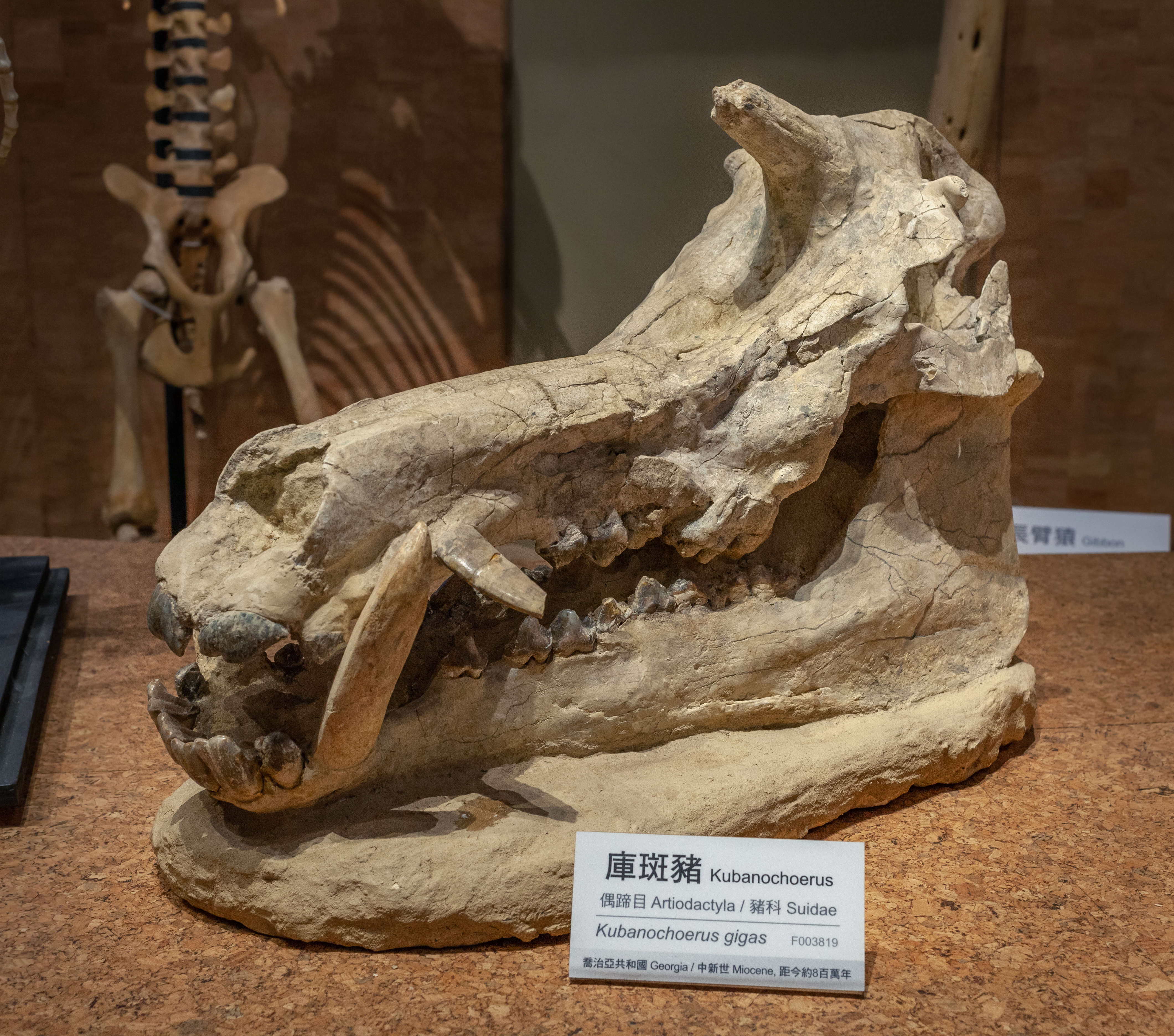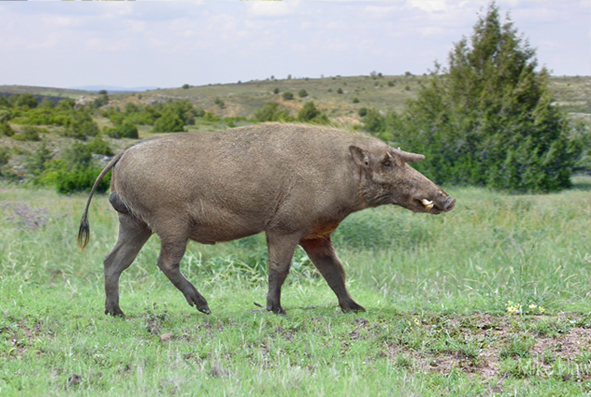Kubanochoerus on:
[Wikipedia]
[Google]
[Amazon]
''Kubanochoerus'' is an extinct genus of large, long-legged
 The genera ''
The genera '' The putative paraceratheriid genus ''Caucasotherium'', described from the Caucasus on the basis of a bone fragment with four incisors, is actually a synonym of the Middle Miocene ''Kubanochoerus gigas''.
The putative paraceratheriid genus ''Caucasotherium'', described from the Caucasus on the basis of a bone fragment with four incisors, is actually a synonym of the Middle Miocene ''Kubanochoerus gigas''.
 The largest species, the aptly named ''K. gigas'', grew to be around at the shoulder, and probably weighed up to in life.
The largest species, the aptly named ''K. gigas'', grew to be around at the shoulder, and probably weighed up to in life.Teeth: Kubanochoerus gigas lii (GUAN)
tesorosnaturales.es The heads of these pigs were unmistakable, with small eyebrow horns, and a large horn emanating from the forehead of the males. It is speculated that the males used their forehead horns for jousting with each other.
''Kubanochoerus''
photo-reconstruction by paleoartis
Roman Uchytel
Prehistoric Suidae Miocene even-toed ungulates Miocene mammals of Africa Fossils of Kenya Miocene mammals of Asia Fossils of China Miocene mammals of Europe Fossils of Russia Fossil taxa described in 1955 Prehistoric even-toed ungulate genera {{paleo-eventoedungulate-stub
suid
The Unix access rights flags setuid and setgid (short for ''set user identity'' and ''set group identity'') allow users to run an executable with the file system permissions of the executable's owner or group respectively and to change behaviour ...
artiodactyl
The even-toed ungulates (Artiodactyla , ) are ungulates—hoofed animals—which bear weight equally on two (an even number) of their five toes: the third and fourth. The other three toes are either present, absent, vestigial, or pointing poster ...
mammal
Mammals () are a group of vertebrate animals constituting the class Mammalia (), characterized by the presence of mammary glands which in females produce milk for feeding (nursing) their young, a neocortex (a region of the brain), fur or ...
from the Miocene
The Miocene ( ) is the first geological epoch of the Neogene Period and extends from about (Ma). The Miocene was named by Scottish geologist Charles Lyell; the name comes from the Greek words (', "less") and (', "new") and means "less recen ...
of Eurasia
Eurasia (, ) is the largest continental area on Earth, comprising all of Europe and Asia. Primarily in the Northern and Eastern Hemispheres, it spans from the British Isles and the Iberian Peninsula in the west to the Japanese archipelago a ...
and Africa
Africa is the world's second-largest and second-most populous continent, after Asia in both cases. At about 30.3 million km2 (11.7 million square miles) including adjacent islands, it covers 6% of Earth's total surface area ...
.
Taxonomy
 The genera ''
The genera ''Libycochoerus
''Libycochoerus'' is an extinct genus of large and long-legged animals in the pig family from the Miocene of Africa.
Taxonomy
''Libycochoerus'' was at one point sunk as a junior synonym of ''Kubanochoerus
''Kubanochoerus'' is an extinct genu ...
'' and ''Megalochoerus
''Megalochoerus'' is an extinct genus of large and long-legged pig-like animals from the Miocene of Africa.
Taxonomy
The species ''M. khinzikebirus'' and ''M. marymuunguae'' were once considered to belong to the related ''Kubanochoerus
''Kub ...
'' were once assigned to ''Kubanochoerus'' but are now considered distinct based on dental and minor cranial details.
 The putative paraceratheriid genus ''Caucasotherium'', described from the Caucasus on the basis of a bone fragment with four incisors, is actually a synonym of the Middle Miocene ''Kubanochoerus gigas''.
The putative paraceratheriid genus ''Caucasotherium'', described from the Caucasus on the basis of a bone fragment with four incisors, is actually a synonym of the Middle Miocene ''Kubanochoerus gigas''.
Description
 The largest species, the aptly named ''K. gigas'', grew to be around at the shoulder, and probably weighed up to in life.
The largest species, the aptly named ''K. gigas'', grew to be around at the shoulder, and probably weighed up to in life.tesorosnaturales.es The heads of these pigs were unmistakable, with small eyebrow horns, and a large horn emanating from the forehead of the males. It is speculated that the males used their forehead horns for jousting with each other.
References
Bibliography
*External links
*''Kubanochoerus''
photo-reconstruction by paleoartis
Roman Uchytel
Prehistoric Suidae Miocene even-toed ungulates Miocene mammals of Africa Fossils of Kenya Miocene mammals of Asia Fossils of China Miocene mammals of Europe Fossils of Russia Fossil taxa described in 1955 Prehistoric even-toed ungulate genera {{paleo-eventoedungulate-stub